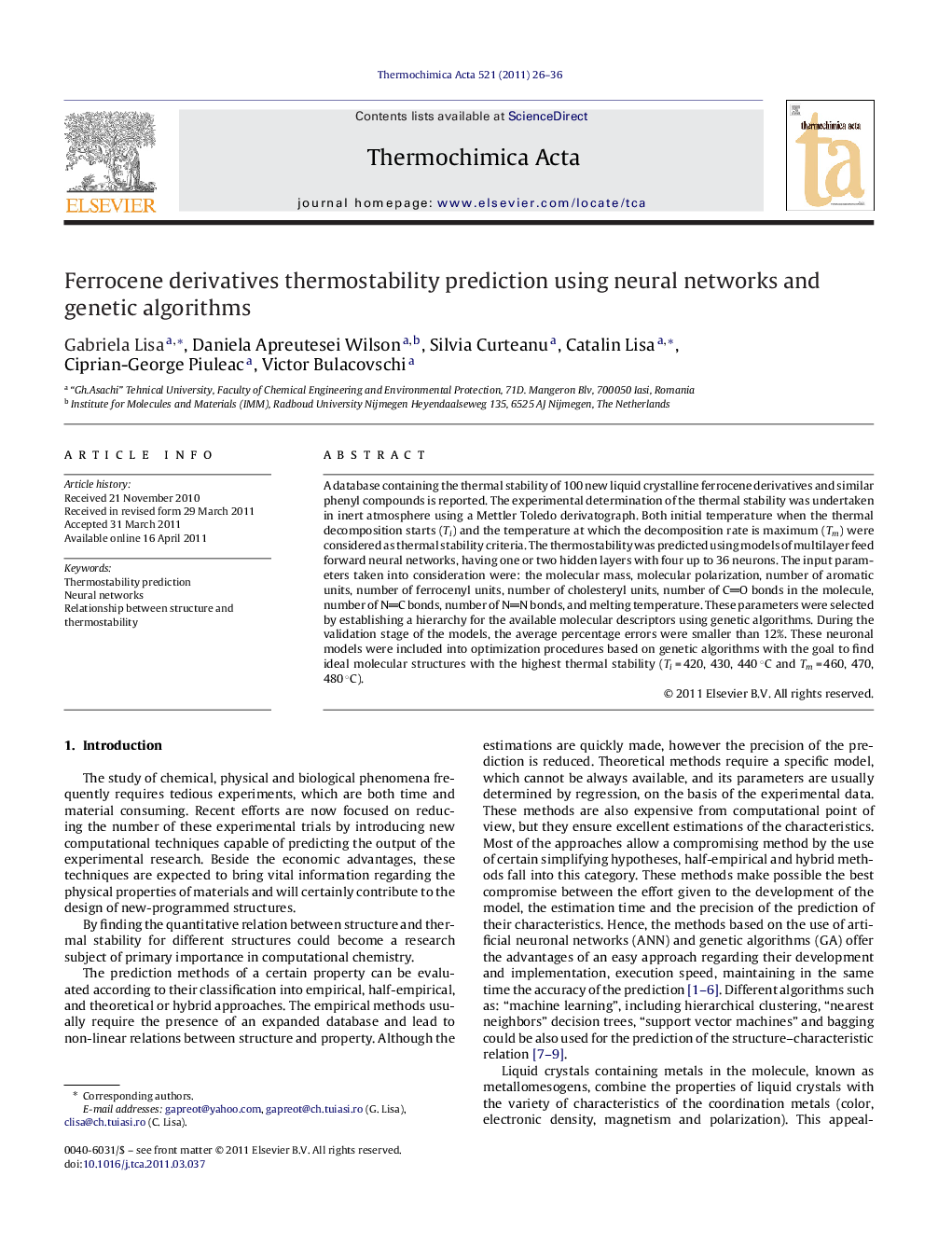| Article ID | Journal | Published Year | Pages | File Type |
|---|---|---|---|---|
| 674487 | Thermochimica Acta | 2011 | 11 Pages |
A database containing the thermal stability of 100 new liquid crystalline ferrocene derivatives and similar phenyl compounds is reported. The experimental determination of the thermal stability was undertaken in inert atmosphere using a Mettler Toledo derivatograph. Both initial temperature when the thermal decomposition starts (Ti) and the temperature at which the decomposition rate is maximum (Tm) were considered as thermal stability criteria. The thermostability was predicted using models of multilayer feed forward neural networks, having one or two hidden layers with four up to 36 neurons. The input parameters taken into consideration were: the molecular mass, molecular polarization, number of aromatic units, number of ferrocenyl units, number of cholesteryl units, number of CO bonds in the molecule, number of NC bonds, number of NN bonds, and melting temperature. These parameters were selected by establishing a hierarchy for the available molecular descriptors using genetic algorithms. During the validation stage of the models, the average percentage errors were smaller than 12%. These neuronal models were included into optimization procedures based on genetic algorithms with the goal to find ideal molecular structures with the highest thermal stability (Ti = 420, 430, 440 °C and Tm = 460, 470, 480 °C).
► Thermal stability of new liquid crystalline ferrocene derivatives is reported. ► Adequate structural descriptors are obtained through molecular modeling. ► The main input variables are chosen with a method based on genetic algorithms. ► Neural network models provide accurate prediction for the thermostability. ► Genetic algorithm gives optimal structure which lead to an imposed thermostability.
